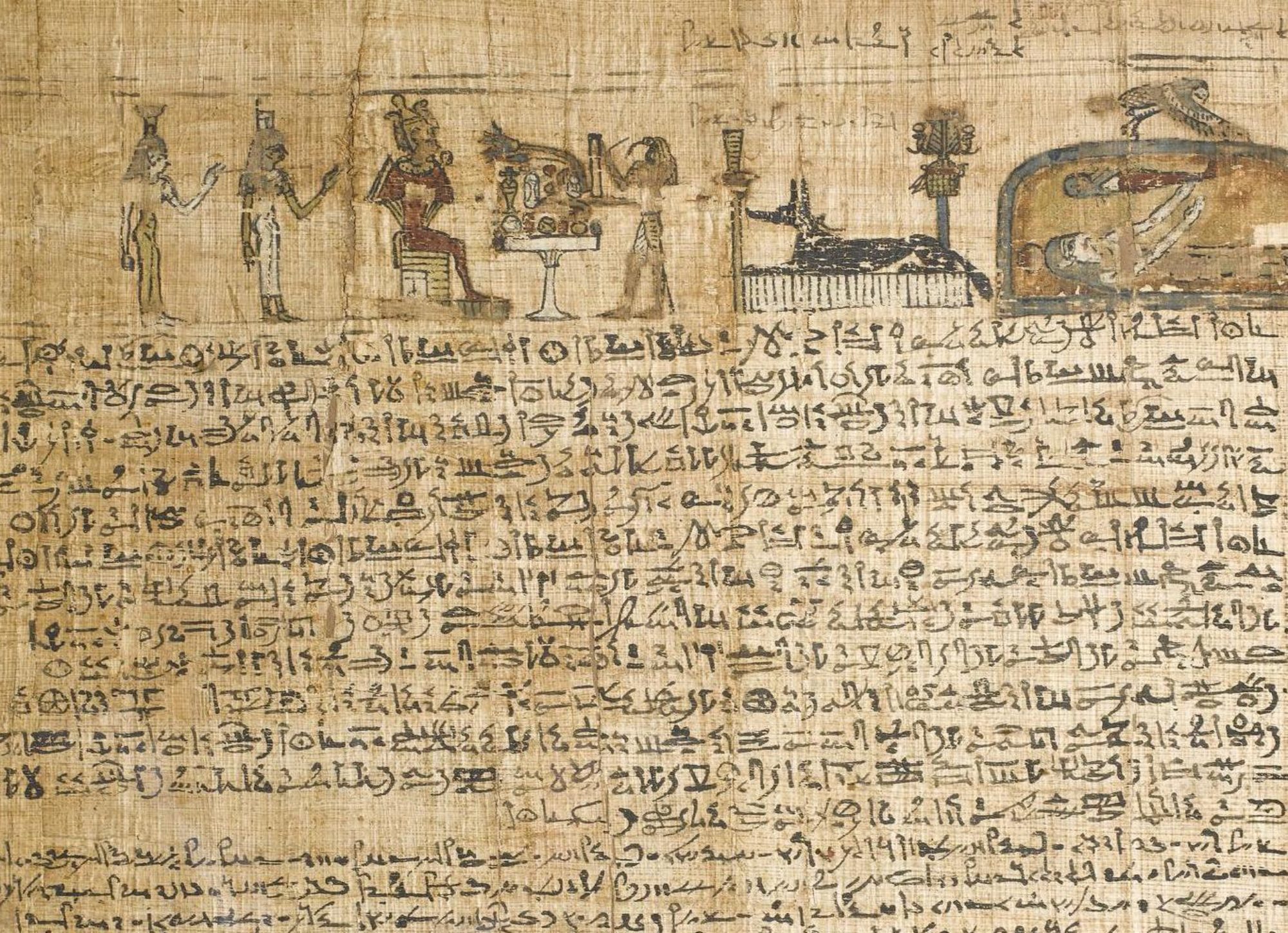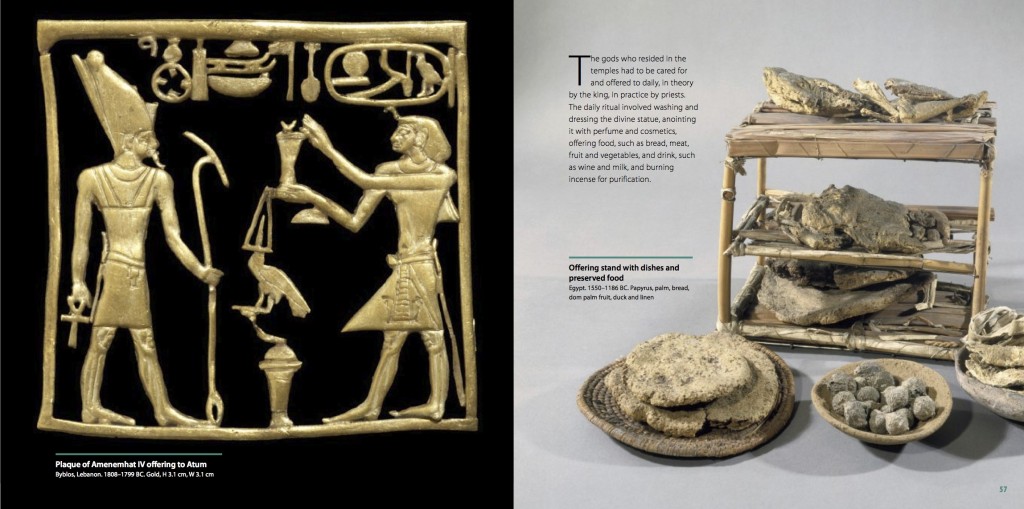 In over three thousand years of history, ancient Egypt was ruled by hundreds of kings; to the untrained eye, they may often seem undistinguishable in their idealised representations, but their stories are more varied and extraordinary than might be imagined. In my new book, written to accompany the British Museum UK touring exhibition Pharaoh: King of Egypt, I explore many of these fascinating stories through the fabulous objects in the British Museum’s collection, from beautiful gilded palace tiles to a papyrus account of royal assassination. The aim of both the exhibition and the book is to juxtapose the ideals of kingship with the more complex realities faced by Egypt’s rulers.
In over three thousand years of history, ancient Egypt was ruled by hundreds of kings; to the untrained eye, they may often seem undistinguishable in their idealised representations, but their stories are more varied and extraordinary than might be imagined. In my new book, written to accompany the British Museum UK touring exhibition Pharaoh: King of Egypt, I explore many of these fascinating stories through the fabulous objects in the British Museum’s collection, from beautiful gilded palace tiles to a papyrus account of royal assassination. The aim of both the exhibition and the book is to juxtapose the ideals of kingship with the more complex realities faced by Egypt’s rulers.
For example, Amun-Ra, king of the gods, was frequently invoked by the Egyptian kings who sought to align themselves with him, but no one could have imagined the many ways in which his name would be used by the pharaohs over the centuries: Hatshepsut, who declared herself the first female king (not queen), told of her own birth as resulting from an assignation between her mother and Amun-Ra in disguise as her father; the kings of Nubia (ancient Sudan) justified their invasion of Egypt as a rescue mission for Amun-Ra, who they alleged was no longer being properly honoured in his own country; Alexander the Great sought out the oracle of Amun-Ra at Siwa Oasis where the god (or his nervous priests) acknowledged the Macedonian conqueror as his son.
The book has been a joy to write, but it actually almost never happened. The plan for the exhibition had always been to focus on creating an open online catalogue so we could offer free access to further object information, which is exactly what we did and you can visit the online catalogue here. It was only just as the exhibition was opening that BM Press broached the possibility of creating of a small affordable illustrated book to accompany the exhibition. The objects themselves are so stunning, from the huge wooden tomb guardian statue of Ramses I to the most delicate gold jewellery of the Middle Kingdom, that the prospect of working further with them was very appealing. In some ways the late start proved quite useful because it offered the opportunity to explore in the book some of the great stories that hadn’t made it into the exhibition.
For example, almost everyone knows of the boy-king Tutankhamun and the incredible discovery of his tomb’s treasures, but fewer will be familiar with the confusion over royal succession after his untimely death. Having died barely out of his teens, Egypt was left without a royal heir to inherit the throne, his only two children having been still born and interred with their father. It’s recorded that a royal widow of that period, probably Tutankhamun’s, wrote in her desperation to a foreign ruler, the Hittite king: ‘My husband died. I do not have a son. But, they say, many are your sons. If you would give me one of your sons, he would become my husband’. But the Hittite prince never made it to his coronation. En route to Egypt, the Hittite prince was murdered and Tutankhamun’s vizier Ay took the throne instead. Ay performed the traditional ceremonies usually carried out at the pharaoh’s funeral by his son, thereby smoothing the path to his succession. Over and over through ancient Egyptian history, the ideals of kingship were used to help soften the much harsher realities of ancient life and maintain stability and power.
While the exhibition consists of 14 sections ranging from royal titulary to temple building, family life to war iconography, my approach for the book was to condense these into a simpler framework of five chapters, each one exploring a key aspect of the king’s duties and mythologized roles, and how different the reality often was from the ideal:
- ‘The son of Ra’, supposedly descended from the gods, but often crowned through circumstance, conspiracy or invasion
- ‘The Lord of the Two Lands’, responsible for maintaining order and the unity of Upper and Lower Egypt, though their failure sometimes plunged the country into civil war
- ‘He who builds the mansions of the gods’, serving as high priest, building temples, or rather taking the shortcut of reusing older monuments
- ‘A champion without compare’, a warrior-king, supposedly protecting Egypt from her enemies, but being conquered in turn just as often
- ‘Lord of Eternity’, when the pharaoh was buried and thought to become one with the gods, after which he might subsequently be worshipped, maligned or forgotten
Each chapter is lavishly illustrated with brand new colour photographs and introduced by two quotations, one framing the idealised vision of the pharaoh in a particular role, the other presenting a starkly different view, to give the ancient Egyptians a chance to speak for themselves in their own words.
For the final chapter, ‘Lord of Eternity’, a quotation from the poem The Tale of Sinuhe illustrates the mythological beliefs surrounding the death of the king and the manner in which his subjects were expected to honour him:
“The God ascended to his horizon; the Dual King Sehotepibre, mounted to heaven, and was united with the sun, the divine flesh mingling with its creator. The palace was in silence, hearts were in mourning.”
In reality, deceased kings could generally expect to be treated much more harshly, as this account by tomb robbers in the Amhurst Papyrus demonstrates:
“We stripped off the gold which we found on the noble mummy of this god. We found the royal wife likewise and we took all that we found on her too. We set fire to their inner coffins.”
I hope that the book Pharaoh: King of Egypt will be an enjoyable introduction to ancient Egyptian kingship and some of the amazing objects in the British Museum’s collection (and it’s only £9.99!). For those in the UK who haven’t yet seen the exhibition, it’s currently on at Birmingham Museum and Art Gallery until 14 October, after which it will be in Glasgow from 3 November 2012 to 24 February 2013, and finally Bristol from 15 March to 9 June, 2013.

